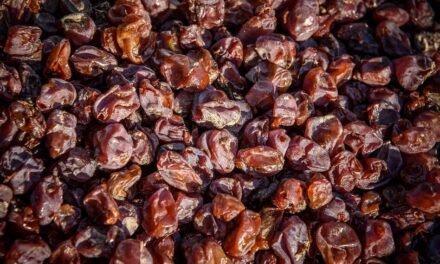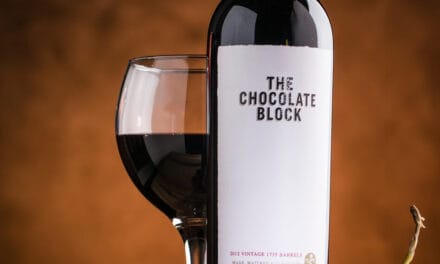Marsala is a fortified wine from Italy. It is made from either white or red grapes and fortified with neutral brandy. Marsala wines range from dry to very sweet, depending on the style.
There are many different types of Marsala. They differ not only in sweetness but also in aromas, color, and age. In the following paragraphs, we will discuss these types and how they are made.
WHERE DOES MARSALA COME FROM?
Marsala wine originates from Sicily, an island in the Mediterranean Sea, south of the Italian mainland. More precisely, it comes from the Trapani region on the west coast of the island, near the city of Marsala. As it is a protected appellation of origin, only wines that come from this region may be labeled as Marsala wine.
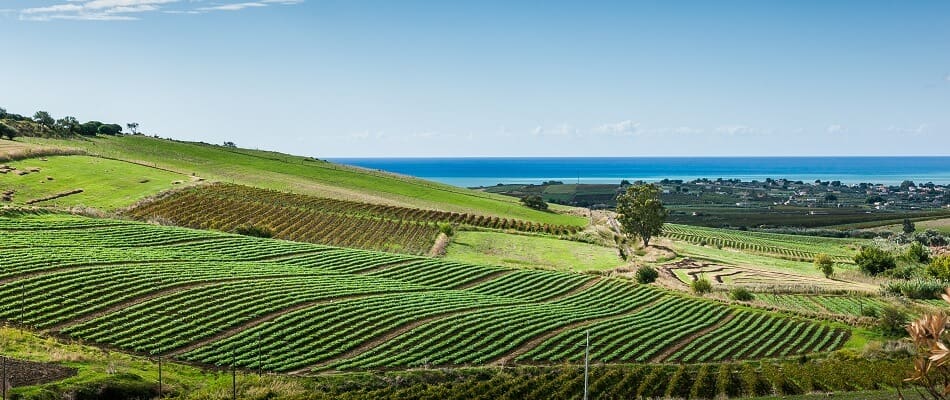
Panoramic View over the Trapani Region, Sicily, Italy
Woodhouse’s fellow countrymen enjoyed the wine, so he invested in the region and its wineries. Within a couple of decades, Marsala wines became extremely popular throughout the United Kingdom, especially in the Royal Navy.
In the 1830s, the Italian winemaker Vincenzo Florio started to build an impressive winery that contributed to spreading the popularity of Marsala across Europe. Today, this company is still one of the biggest producers of Marsala wine.
DIFFERENT TYPES OF MARSALA
- Oro Marsala has a rich golden color.
- Ambra Marsala comes in amber tones.
- Robino Marsala is a wine of ruby red color.
Another important way to distinguish the wines is their age, or more precisely, the time they mature in oak barrels:
- Fine Marsala ages for one year in wooden barrels.
- Superiore Marsala (English: Superior) ages for at least two years.
- Superiore Riserva (Superior Reserve) stays in barrels for four years.
- Vergine (Virgin) or Solera styles age for at least five years. All Vergine and Solera wines are Oro-style wines.
- Vergine Stravecchio (Virgin Stravecchio) or Vergine Riserva (Virgin Reserve) also belong to the Oro category. They age in oak barrels for ten or more years.
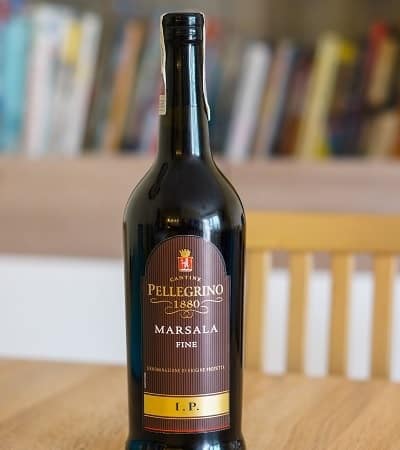
Bottle of Fine Marsala
Finally, we can categorize Marsala by its level of sweetness:
- Dolce Marsala is a sweet wine with more than 100 grams of sugar per liter
- Semi-Secco Marsala is off-dry (or semi-sweet). It contains 41 to 100 grams of sugar per liter.
- Secco Marsala is dry with a maximum of 40 grams of residual sugar per liter. Vergine Marsala tends to be the driest type of Marsala.
WHAT IS MARSALA WINE MADE FROM?
To produce Marsala, winemakers can use red or white grapes. They select the varietals depending on the style they want to make:
- With the white varietals Grillo, Inzolia, Catarratto, and Damaschino, they produce Oro Marsala and Ambra Marsala.
- Robino Marsala is made from the red varietals Nerello Mascalese, Pignatello, and Nero d’Avola.
HOW MARSALA IS MADE
Marsala undergoes a production process that is, in many aspects, unique. One of these aspects is the old-fashioned way of cultivating grapes.
Vintners especially prune the vine stocks so that the clusters of grapes hang very low. They almost have contact with the ground. A roof of leaves functions as a sunshade above the grapes and protects them from too much heat. At the same time, it prevents the soil from drying out. While this traditional method of growing vines requires hard manual work, it contributes to the high quality of Marsala grapes.
Starting with fermentation, the production processes for the various types of Marsala differ slightly.
After fermenting the wine must to dryness, winemakers fortify Ambra Marsala with neutral brandy. Then, they add about one percent of cooked grape must. This most, called “Mosto Cotto”, is basically concentrated grape sugar. It makes the wine much sweeter and also gives it its typical amber color.
For Oro Marsala, vintners add “Mistela” instead of Mosto Cotto. Mistela is a liquor made from late harvest Grillo grapes and fortified with Brandy. It increases the wine’s alcohol content and adds some sweetness, but it doesn’t change its color significantly.
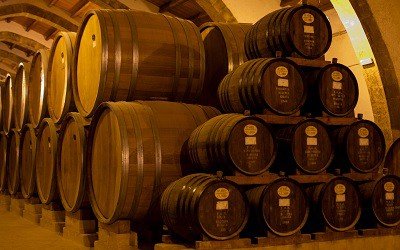
Barrels for Aging Marsala Wine
Finally, Robino Marsala is made by adding grape spirit as well. For high-quality wines, this spirit undergoes an aging process of up to five years in oak barrels beforehand. Winemakers may not use Mosto Cotto to fortify Robino Marsala.
After the fermentation and fortification, Marsala has to age in wooden casks. Depending on the desired style, the aging process can last from one to more than ten years (see the section about different types of Marsala above).
For some of the highest-quality Marsala wines, winemakers follow the Solera method to age them.
WHAT DOES MARSALA TASTE LIKE?
The taste of Marsala depends on its style. In general, it’s comparable to Madeira, which is a fortified Portuguese wine. All types are relatively strong, with 15 to 20% alcohol.
Ambra Marsala often has flavors of dried fruit, apricot, almonds, and different nuts. Old vintages can develop aromas of maple syrup, cherry, or spices like black pepper and thyme.
Oro Marsala comes with aromas of vanilla, hazelnuts, raisins, or licorice. High-quality wines can taste like peach jam or caramel, but they also might contain mushrooms and wooden aromas.
Robino Marsala offers fruity flavors, including cherry, pomegranate, or plum, and in some cases, has flowery notes. Typically, these wines are stronger in tannins than Oro or Ambra-style Marsala.
HOW TO SERVE MARSALA WINE
Traditionally Marsala was drunk as an aperitif between the first and the second course of a dinner. Nowadays, serving it as a dessert wine with the last course is more common.
The highest quality Marsala types are great on their own without a meal as well.
What Is the Right Glass for Marsala Wine?
When serving Marsala to your guests, pour it into dessert wine glasses. Tulip-shaped glasses with long stems are perfect, but Port glass is an acceptable alternative. Regular red or white wine glasses are not ideal because their bowls are too big.
What Is the Right Serving Temperature for Marsala?
Serve Marsala slightly chilled at around 54 to 57°F (12-14°C). High-quality Vergine or Vergine Stravecchio wines should be a little warmer: 59 to 61°F (15-16°C) is perfect.
Should You Decant Marsala Wine?
Decanting Marsala is absolutely useful. It helps the wine release all its delicate aromas. For old wines, it also helps get rid of sediment that might be present in the bottle.
HOW TO STORE MARSALA WINE
Like all wines, you should store Marsala in a cool, dark place. Make sure to keep the temperature constant and protect the bottle from sunlight. A shelf in your cellar is ideal.
Can Marsala Wine Go Bad?
Like most other wines, Marsala can go off when exposed to oxygen for a long time. Due to its high level of alcohol, it’s more resistant than regular table wines, though.
How Long Does Marsala Wine Last When Open?
After opening a bottle of Marsala, it will stay fresh for about one month. You can extend this period by removing the gas from the bottle, resealing it, and storing it in a refrigerator. With these measures, Marsala will keep for up to six months after opening.
WHICH FOOD GOES WITH MARSALA?
Dry Marsala wines go well with salty or savory meals. Serve them with veal, turkey, or mushrooms. Snacks like olives or salted nuts or cheeses like Gorgonzola, Roquefort, or Parmesan are great fits as well.
Sweet Marsala types are good pairings for chocolate desserts. But they can also go well with creamy chicken or pork dishes. As said before, these types are excellent on their own, too.
MARSALA WINE SHOPPING TIPS
When shopping for Marsala in Europe, make sure it actually says “Marsala” on the bottle label. Only wines from the Marsala DOC on Sicily may carry this name, so it is an indicator of a traditional high-quality wine. This rule does not apply to the United States or other regions, though. So if you want an authentic Marsala experience, read carefully about where a wine was produced.
Entry-level Marsala is available from 10 USD per 750ml bottle. For Riserva wines, expect to pay at least 25 USD. High-quality styles like Vergine Riserva Marsala are even more expensive. It is not unusual to pay 100 USD or more for them.
If you are searching for wine for cooking, Oro and Ambra-style Marsalas will be the right choices. Sweet wines are suitable for desserts like Zabaglione, while dry styles are the right pick for rich dishes like Chicken Marsala. Buy a Rubino Marsala only if the recipe explicitly calls for it. Entry-level wines like Fine or Superiore Marsala are perfectly fine for cooking.
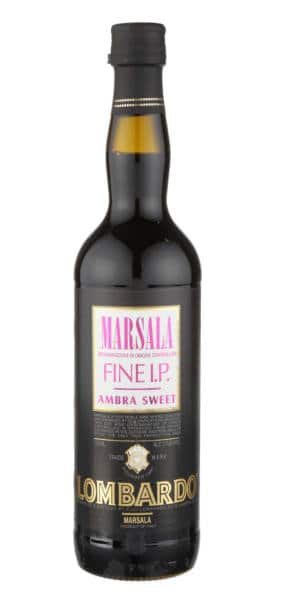
Lombardo Ambra Sweet Marsala
$12.99
from: Wine.com
FINAL WORDS
The region of Marsala offers a great variety of wines. No matter if you like dry or sweet wines, chances are high that you will find a Marsala that matches your taste. So don’t hesitate and add Marsala as an aperitif or a dessert wine to your next dinner party.


